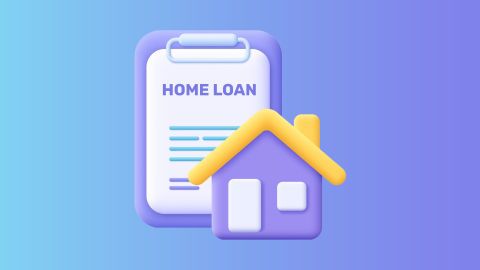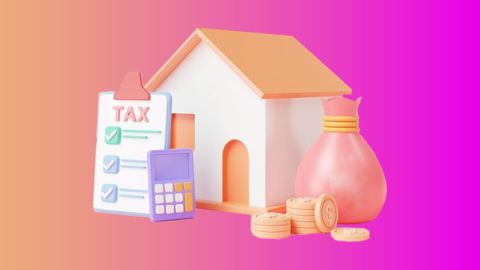Home is a basic necessity but buying a house or land has become expensive in India for multiple reasons. With the increasing demand, rising construction costs, land prices, and inflation, owning a home has become a far-fetched dream. Lack of affordable housing and urban population growth fuel India's real estate price hike.
To address this problem, the Government of India launched Pradhan Mantri Awas Yojana (PMAY) in 2015. PMAY helps you own a home and aims to provide affordable housing to all urban and rural citizens of India by 2022.
The PMAY aimed to provide affordable housing to the Economically Weaker Sections (EWS), Middle-Income Groups (MIG), and Low-Income Groups (LIG). This scheme provides financial assistance in the form of interest subsidy and credit-linked subsidy to purchase or construct a house.
The scheme is divided into PMAY Urban (U) and PMAY Gramin (G). The below table helps you understand the economic classification based on the beneficiaries.
Beneficiaries |
Economic classification |
All beneficiaries under PMAY (U) scheme |
Economically Weaker Sections (EWS), Low-Income Group (LIG) and Middle-Income Group (MIG) |
Beneficiaries under CLSS of PMAY (U) |
Low-Income Groups and Middle-Income groups |
Beneficiaries under PMAY (G) scheme |
EWS, LIG, and BPL (Below Poverty Line) |
Here are some other economic eligibility criteria to apply for and secure a subsidy for house construction, improvement, or enhancement:
Particulars |
MIG - 1 |
MIG - 2 |
LIG |
EWS |
Annual income (household) |
Rs. 6 lakh to Rs. 12 lakh |
Rs. 12 lakh to Rs. 18 lakh |
Rs. 3 lakh to Rs. 6 lakh |
Up to Rs. 3 lakh |
Subsidy on home loan interest rate |
4% p.a. |
3% p.a. |
6.5% p.a. |
6.5% p.a. |
Amount of home loan eligible for subsidy (maximum) |
Rs. 9 lakh |
Rs. 12 lakh |
Rs. 6 lakh |
Rs. 6 lakh |
Maximum tenure of home loan (in years) |
20 |
20 |
20 |
20 |
Amount of subsidised interest (maximum) |
Rs. 2.35 lakh |
Rs. 2.30 lakh |
Rs. 2.67 lakh |
Rs. 2.67 lakh |
Dwelling unit’s carpet area (maximum) (in sq. m.) |
160 |
200 |
60 |
30 |
You can avail of a home loan from Bajaj Finserv to finance your first home and reduce your EMI burden with the help of PMAY.
Economic Classification of Pradhan Mantri Awas Yojana and eligibility criteria
The scheme is divided into PMAY Urban (U) and PMAY Gramin (G). The below table helps you understand the economic classification based on the beneficiaries.
Beneficiaries |
Economic classification |
All beneficiaries under PMAY (U) scheme |
Economically Weaker Sections (EWS), Low-Income Group (LIG) and Middle-Income Group (MIG) |
Beneficiaries under CLSS of PMAY (U) |
Low-Income Groups and Middle-Income groups |
Beneficiaries under PMAY (G) scheme |
EWS, LIG, and BPL (Below Poverty Line) |
Here are some other economic eligibility criteria to apply for and secure a subsidy for house construction, improvement, or enhancement:
Particulars |
MIG - 1 |
MIG - 2 |
LIG |
EWS |
Annual income (household) |
Rs. 6 lakh to Rs. 12 lakh |
Rs. 12 lakh to Rs. 18 lakh |
Rs. 3 lakh to Rs. 6 lakh |
Up to Rs. 3 lakh |
Subsidy on home loan interest rate |
4% p.a. |
3% p.a. |
6.5% p.a. |
6.5% p.a. |
Amount of home loan eligible for subsidy (maximum) |
Rs. 9 lakh |
Rs. 12 lakh |
Rs. 6 lakh |
Rs. 6 lakh |
Maximum tenure of home loan (in years) |
20 |
20 |
20 |
20 |
Amount of subsidised interest (maximum) |
Rs. 2.35 lakh |
Rs. 2.30 lakh |
Rs. 2.67 lakh |
Rs. 2.67 lakh |
Dwelling unit’s carpet area (maximum) (in sq. m.) |
160 |
200 |
60 |
30 |
You can avail of a home loan from Bajaj Finserv to finance your first home and reduce your EMI burden with the help of PMAY.
Components of Pradhan Mantri Awas Yojana
The Pradhan Mantri Awas Yojana (PMAY) is a flagship affordable housing scheme launched by the Government of India to provide affordable housing solutions to the urban and rural poor. The scheme has several components aimed at addressing various housing needs across different segments of society. Here are the main components of the Pradhan Mantri Awas Yojana:
1. PMAY-Urban (PMAY-U):
- In-Situ Slum Redevelopment (ISSR): Under this component, slums are redeveloped by providing infrastructure and housing amenities to the existing slum dwellers without relocating them. The aim is to improve their living conditions and integrate them into the formal urban landscape.
- Credit-Linked Subsidy Scheme (CLSS): This component provides interest subsidy on home loans to eligible beneficiaries belonging to the economically weaker sections (EWS), lower-income groups (LIG), and middle-income groups (MIG). The subsidy is provided directly to the home loan accounts of beneficiaries, reducing their effective loan burden.
- Affordable Housing in Partnership (AHP): This component aims to facilitate the construction of affordable housing units through partnerships between public and private sectors. It encourages the participation of private developers and non-profit organizations in the construction of affordable housing projects.
- Beneficiary-Led Construction (BLC): Under this component, eligible beneficiaries are provided with financial assistance to construct new houses or enhance existing ones on their own land. The beneficiaries have the flexibility to design and construct their houses as per their requirements.
2. PMAY-Gramin (PMAY-G):
- New construction: Under this component, financial assistance is provided for the construction of new houses for eligible beneficiaries in rural areas. The aim is to provide pucca houses with basic amenities to households living in kutcha houses.
- Renovation of existing houses: Financial assistance is provided for the renovation of existing houses to convert kutcha houses into pucca houses. The focus is on improving the quality of housing and providing basic amenities such as toilets, electricity, and water supply.
- Beneficiary-led construction: Similar to the urban component, eligible beneficiaries in rural areas are provided financial assistance to construct new houses or enhance existing ones on their own land.
These components of the Pradhan Mantri Awas Yojana collectively aim to address the housing needs of different segments of society, including slum dwellers, economically weaker sections, lower-income groups, and middle-income groups, both in urban and rural areas.
Benefits of the PMAY scheme
1. Generous subsidies for every citizen
The biggest benefit of the PMAY scheme is the subsidy that the government offers to an individual buying their first home. This means not you or your family member should be an existing homeowner. The government provides a credit-linked subsidy depending on your income bracket. The income brackets include economically weaker sections (EWS), low-income groups (LIG), and middle-income groups (MIG) 1 and 2.
Pradhan Mantri Awas Yojana includes four components that eligible individuals can benefit from:
- Credit-linked subsidy scheme (CLSS)
- Partnered affordable housing
- Rehabilitation of slum dwellers, on an in-situ basis
- Subsidised individual house construction or enhancement
2. Housing for all strata of the society
Under the PMAY scheme, the government aims to construct two crore affordable houses in prominent urban areas for those eligible under the scheme. Through these housing projects, the government hopes to uplift the standard of living for many.
3. Housing development in every corner of the country
PMAY makes a woman’s homeownership a mandatory clause. As per the clause, even if a woman is not buying the property, you should register the house in her name.
To become homeowners under PMAY, the preference provisions exist for:
- Salaried women
- Widows
- Transgender people
- The disabled
- Minorities
- Seniors
The scheme assures senior citizens buying a home of ground-floor accommodation.
4. Eco-friendly homes
The scheme also aims to build houses using eco-friendly construction technology and materials. This will ensure limited environmental damage in and around construction sites and will keep pollution levels in check.
Knowing these PMAY benefits, you can now check the PMAY list to see whether you qualify under the scheme. Once you know you are eligible, you can apply for a home loan under PMAY through lenders like Bajaj Finserv. This gives you the PMAY scheme's benefits and the flexible repayment terms that Bajaj Finserv offers.
Additional Read: Check your name in the Pradhan Mantri Awas Yojana beneficiary list
Bajaj Finserv brings you pre-approved offers for personal loans, home loans, business loans, and a host of other financial products. Not only does this simplify the process of availing finance, but it also helps you save time. All you have to do is share a few basic details and check out your pre-approved offer.
Need instant financing? Consider it done with Bajaj Finserv.
Also Read: All you need to know about PMAY
DISCLAIMER:
While care is taken to update the information, products, and services included in or available on our website and related platforms/websites, there may be inadvertent inaccuracies or typographical errors or delays in updating the information. The material contained in this site, and on associated web pages, is for reference and general information purpose and the details mentioned in the respective product/service document shall prevail in case of any inconsistency. Subscribers and users should seek professional advice before acting on the basis of the information contained herein. Please take an informed decision with respect to any product or service after going through the relevant product/service document and applicable terms and conditions. In case any inconsistencies observed, please click on reach us.
*Terms and conditions apply








